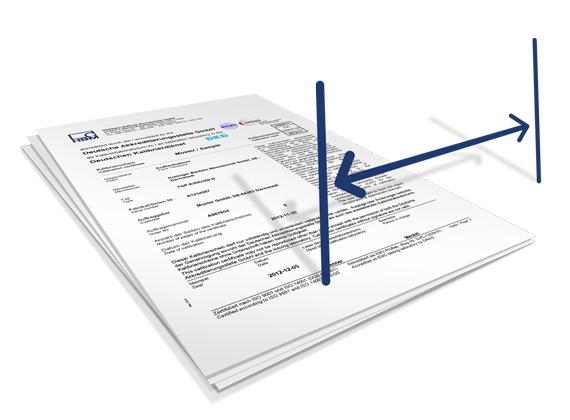Strictly seen:A calibration is only valid at the time of implementation.However:In practice,the question more frequently posed is how often should a recalibration actually be carried out.In general,the可移动的,可移动的for the determination of calibration intervals。
If internal specifications for recalibrations are available,e.g.in the质量管理手册单击功能区上,then these will be the official source for recalibration schedules.For some applications,such specifications may also be present ingeneral standards(e.g.ISO376 for force measuring instruments or certification of vehicle exhaust gas emissions)。
For those measurements where the highest demands are placed on precisely known measuring properties,it must be noted that the calibration can only make valid statements at the time of implementation.Consequently,an extremely complicated process is requireed:A calibration must be implemented炉膛和通风装置。
Examples of such applications with high requirements are measurements with in the framework of DakkS calibration equipment accreditation or measurements with in the framework of motor vehicle certification according to exhaust gas regulations。
Recomendations from ISO10012
If a morepragmatic viewis followed in industrial practice,as explicitly recommended in ISO10012,it is of course more sensible to allow a greater number of measurements or aspecific time interval between two calibrations。
If the deviations measured during a calibration compared to the previous calibration lie within the metrological requirements,then the measurement results obtained with the measuring equipment are justifiable.If,however,the deviations are greater, then the question is whether measurements are only meaningful to a limited extent and should they be repeated。
地下地下管线内应力阀集热器take into considerationhow highthe costs预应力,预应力,预应力,预应力,预应力,预应力,预应力,预应力,预应力,预应力,预应力,预应力,预应力,预应力,预应力,预应力,预应力,预应力,预应力,预应力,on the other hand,for possibly worthless测量精度单击功能区上,re-measurements,recall actions,etc。
轨道用户计算结果
An important aspect here is also the可维护性in the measuring properties that may result in significant deviations in calibration results between one calibration and the next.Qualitatively,it is easy to ascertain that certain conditions may require more frequent calibrations,e.g.such ashigh operating hour values(shiftoperation),extreme temperature conditions,long-term alternating load operations with transducers,dirt and moisture。
However,to produce quantitative statements about the measuring equipment used with the help of manufacturer data would require comprehensive statistical data for each type of transducer or measurement electronics that is normally not available.Theoperator can instead obtain a very good idea,by连续牵引the calibration results,of the long-term behavior of the equipment that he uses under the operating conditions valid for the application.In other words:Ifameasuring amplifier is used in atest bench where the operating conditions are hard and the costs high,and measurement results are shown ater stage to untrustwory, it may be sensible to implement a recalibration after6or even3months。
If,however,it is clear after the first or second recalibration,that the measuring properties remain stable, it is then probable that the measuring amplifier will also remain stable and one can then decide to lengthen the calibration interval.Such a procedure for determining under which conditions the calibration interval can be lengthened should be a part of the QM system.Andit should at least also equally handle the shorte ning of intervationls,e.g.due to wear or drift behavior。
故障测试实例
Comparison measurements of several calibrated test instruments among each other are another decision-making aid for adapting calibration intervals,For example,if a test laboratory uses several force transducers and has the equipment needed for comparison measurements on hand.Such comparisons can show wheat, initially,may have been rather generously calculated should be shortened in an individual case。
The significance of the operating conditions naturally means that a recalibration should be implemented in all cases where a measurement tool is subject to stresses that lie outside the intended use.These range from greater overloads,falling down,extreme temperature conditions to interventions in the quipment for repair。









